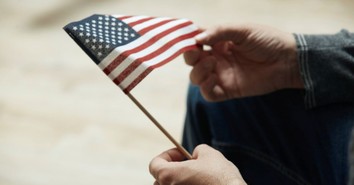The History Behind Mother's Day

All across the world, over 46 countries honor mothers with a special day, but not all nations celebrate on the same day. We honor mothers with cards, candy, flowers and dinner out. But have you ever considered how this became a legal holiday in the United States?
Mother's Day was first suggested in the United States by Julia Ward Howe, writer of the Battle Hymn of the Republic. She suggested that this day be dedicated to peace. Miss Howe organized Mother's Day meetings in Boston, Mass. yearly.
In 1877, Mrs. Juliet Calhoun Blakely inadvertently set Mother's Day in motion. On Sunday, May 11, 1877, which was Mrs. Blakely's birthday, the pastor of her Methodist Episcopal Church left the pulpit abruptly, being distraught over the behavior of his son.
Mrs. Blakely stepped to the pulpit to take over the remainder of the service and called for other mothers to join her. Mrs. Blakely's two sons were so touched by her gesture that they vowed to return to their hometown of Albion, Michigan every year to mark their mother's birthday and to pay tribute to her. In addition, the two brothers also urged business associates and those they met while traveling as salesman to honor their mothers on the second Sunday of May. They also urged the Methodist Episcopal Church in Albion to set aside the second Sunday of each May to honor all mothers, and especially their own.
While there were local celebrations honoring mothers in the late 1800's, it was largely due to the efforts of Anna Jarvis that Mothers Day became a national holiday in the United States. Anna's mother, Mrs. Anna M. Jarvis, had been instrumental in developing "Mothers Friendship Day" which was part of the healing process of the Civil War. In honor of her mother, Miss Jarvis wanted to set aside a day to honor all mothers, living and dead.
In 1907, Miss Anna began a campaign to establish a national Mother's Day. She persuaded her mother's church in Grafton, West Virginia to celebrate Mother's day on the second anniversary of her mother's death, the 2nd Sunday of May. By the next year Mother's Day was also celebrated in her own city of Philadelphia.
Miss Jarvis and her supporters began to write to godly ministers, evangelists, businessmen, and politicians in their crusade to establish a national Mother's Day. This campaign was a success. By 1911, Mother's Day was celebrated in almost every state in the Union. In 1914, President Woodrow Wilson made the official announcement proclaiming Mother's Day as a national holiday that was to be held each year on the second Sunday of May.
The one-woman crusade of Anna Jarvis is often overlooked in History books. Women during the early 1900s were engaged in many other reform efforts that the history behind Mother's Day is often neglected. But it is likely that it was these other reforms and the avenues they opened for women that paved the way for Anna Jarvis to succeed in her campaign for Mother's Day.
Patti Chadwick is a freelance writer and publisher. Check out her online magazines at www.parentsandteens.com and www.historyswomen.com. For family-friendly books at affordable prices visit www.pcpublications.org. While you are visiting sign up for her FREE newsletters! You can write her at patti@historyswomen.com
Originally published May 09, 2003.







